We’ve now completed a third rotation of the Player’s Handbook, meaning that almost every class has had every subclass from that book examined in the Class 101 series! Two classes with lots of subclasses—the cleric and wizard—will need a little extra time to cover. Starting this week, however, we’re moving away from the Player’s Handbook and taking a look at the brand-new subclasses that you’ll find in Tasha’s Cauldron of Everything!
The first new subclass from Tasha’s is also from the game’s newest class: the artificer. This subclass, the Armorer, is a favorite of both Todd Kenreck and myself, because of the way they straddle the line of fantasy and science fiction with their magical power armor.
Artificers are most common in the world of Eberron, as described in Eberron: Rising from the Last War. However, artificers of some sort can be found all throughout the D&D multiverse. You can find artificers in the Forgotten Realms on the isle of Lantan, among the gnomes of Hupperdook in Wildemount, and filling all levels of prestige within the ranks of the Izzet League on the world-city of Ravnica—just to name a few settings where artificers can be found. If you’re playing D&D in another world or in a homebrew setting, talk with your Dungeon Master about how you could integrate artificers into this world.
Check out the other guides in the Class 101 series, like the broad overview of the artificer class in Artificer 101: A Beginner’s Guide to Making Magical Marvels, or a deep dive into a specific subclass in Artificer 101: Alchemist. If you’re interested in playing other classes, check out the entire Class 101 series.
Story of the Armorer
“And that is the Mark 1 Guardian.” A half-orc dressed in oil-covered clothing whistled in awe. Her hair was pulled into a high ponytail and her biceps glistened under the light of the forge. She turned to the hobgoblin beside her, who looked on in awe at the suit of steel plate armor that hung on the wall before them both. “I’m afraid it’s for personal use only. Not for sale.”
“Your pièce de résistance?” the hobgoblin replied gruffly.
“My masterpiece,” the armorer replied proudly. “But I’m not so precious to think that it’s perfect. You can see that I haven’t bothered polishing it.” Just as she said, the armor was rough, unfinished, and unpolished. By its appearance, it hardly befitted the title of masterpiece.
“My warriors care little for polish,” the hobgoblin said guilelessly. “We are interested in strength and durability. You can provide both?”
The half-orc armorer laughed. “In spades, my friend. My apprentices and I can supply you with armor that will suit your mercenary company’s needs, but you deserve something better, don’t you? Would you care for a demonstration? I can’t promise you something quite as good as the Mark 1, but you’ll see that my armor is made of more than just steel.”
The hobgoblin barked out a jagged laugh. “A claim I’ve heard a hundred times. Go on, armorer, prove the worth of your steel!”
A smile crossed the armorer’s face, just wide enough for one of her stubby tusks to pop out from behind her lips. She strode across the room and placed her hand on the chest piece of her Mark 1 Guardian. Its plates shuddered at her touch, then sprung to life and rolled down her arm like an army of dully glinting beetles. In seconds, there was a click as the metal plates which had slithered over her body snapped into place. The tiny runes engraved around the edges of each plate glowed with faint white light, and her heavy gauntlets thrummed with barely restrained thunder.
The armorer reached to a weapon rack and tossed a longsword to the hobgoblin, who caught it deftly, even taken by surprise. His mouth hung slightly agape, and his eyes darted up and down the half-orc’s armored body, drinking in the details of her handiwork. She set her feet in a fighting stance and pointed her open palms at the hobgoblin, causing a faint pulse of rumbling magic to hum through the air between them.
“Is this demonstration enough, sir?” she asked cheekily. “Or would you prefer to test the Guardian’s might yourself?”
The hobgoblin laughed again, this time with complete, unchecked mirth. He set the sword down upon a bench and held his hands over his shoulders. “I yield, armorer! You are no charlatan, I trust that your steel is honest. Are you certain your Guardian is not for sale?”
The half-orc shook her head. “It’s bonded to me, sir. It wouldn’t be more than a suit of ill-fitting plate mail on the shoulders of another.”
“Then…” the hobgoblin turned to the armorer slyly. “Perhaps I can make an offer for your armor with you still in it. There are tasks too dangerous even for my mercenaries to take on—if you would be willing to leave your forge, we could use an adventurer. My pockets are deep, armorer.”
Armorer Features
Armorers are artificers who have specialized in the craft of armor smithing. Like any good artificer, they don’t simply make armor, they make miracles. The artificer gains four subclass features at 3rd, 5th, 9th, and 15th level. You can read all of the Alchemist specialty features in Tasha’s Cauldron of Everything. In summary, your subclass features allow you to:
- Become proficient with smith’s tools
- Learn new spells thematically appropriate for an armorer
- Create a suit of arcane armor that only you can wear, gaining special powers if it’s in its Guardian or Infiltrator form
- Attack more than once per turn, making you a more dangerous fighter
- Infuse the individual components of your Arcane Armor with magic
- Perfect your Guardian and Infiltrator armor models
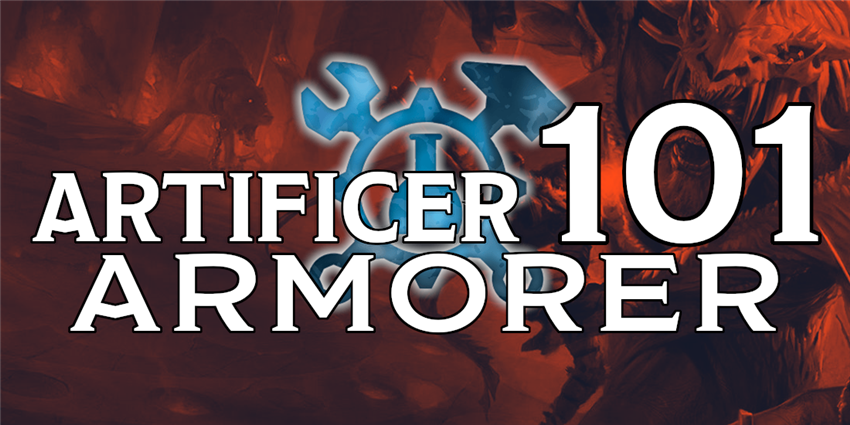
Benefits of the Armorer
The Armorer subclass lets the artificer take on a surprising role in combat: the role of tank! No one would expect the artificer, a class that is by all accounts a fantasy scientist, to be able to step out onto the battlefield, hollering for all blades to be turned upon them, yet this is exactly what the Armorer artificer is able to do with the Guardian model of their Arcane Armor. Better yet, they aren’t pigeonholed into the tank role. After a short rest, the Armorer can retool their Arcane Armor into the sleek and stealthy Infiltrator model, allowing them to slink quickly through the shadows.
Notably, both armor models let you do something that few other classes can do. The Guardian model’s Thunder Gauntlets allow you to “taunt” foes when you hit them, encouraging them to attack you by imposing disadvantage on that creature’s attacks against other foes. To improve your survivability, it also allows you to gain a surge of temporary hit points to mitigate incoming damage.
All of the Armorer’s class features either synergize with both armor models, or specifically improve one of them. For instance, the Extra Attack feature is useful for striking multiple targets with the Guardian model’s Thunder Gauntlets, thus “taunting” more foes. While it’s less useful on the Infiltrator model, having another attack makes it more likely for you to hit at least once with your Lightning Launcher, which gets bonus damage once per turn.
Taken together, this bevy of powerful and versatile features transform you into a terror on the battlefield, while still wielding an artificer’s spells and the ability to infuse your allies’ items with magic to support them in whatever dangerous situations you might face.
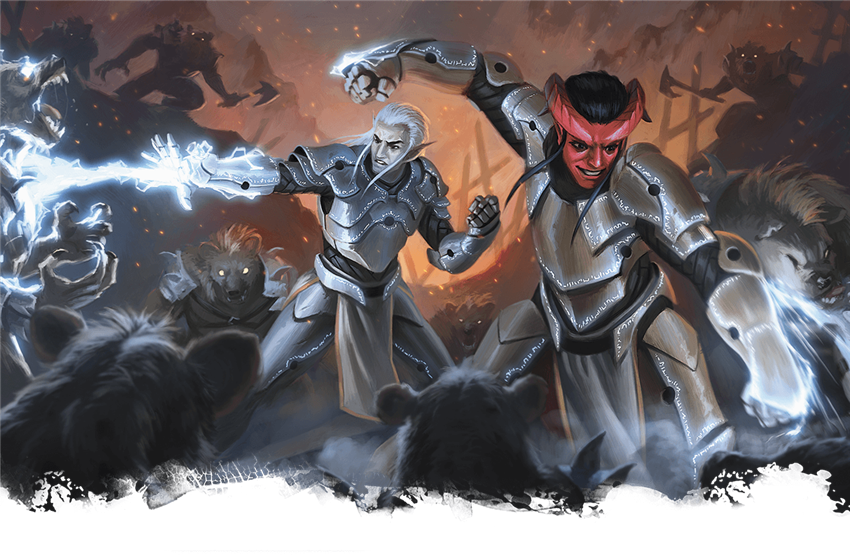
Drawbacks of the Armorer
The Armorer is a powerful subclass, but that power comes at a price. The most significant price is the price of paperwork. The Armorer’s 9th-level feature, Armor Modifications, lets you enchant your Arcane Armor in an incredibly granular way. This feature separates your armor into segments, each of which can be infused separately. This is a substantial boost to your power, and D&D Beyond’s digital character sheets will help you keep track of all your features, but you still have to do the work of deciding how to allocate your infusions—and more importantly, re-allocate your infusions whenever you want to change up which infused items you have available to you.
This leads to the most significant drawback of the Armorer subclass: a tradeoff between personal power and team support. The Armorer is one of the most self-sufficient artificer subclasses in the game. However, a hallmark feature of the artificer is their ability to infuse items with magic, not just for their own use, but for their allies’ use. Similarly, other subclasses have a number of spells and class features that encourage artificers to support their allies, rather than becoming the center of attention themselves. The Armorer subclass isn’t without these features—the Guardian model Arcane Armor is one of the best tanking tools in D&D—but it vastly minimizes party support in favor of personal power. If you want to play a support character, this isn’t the subclass for you.
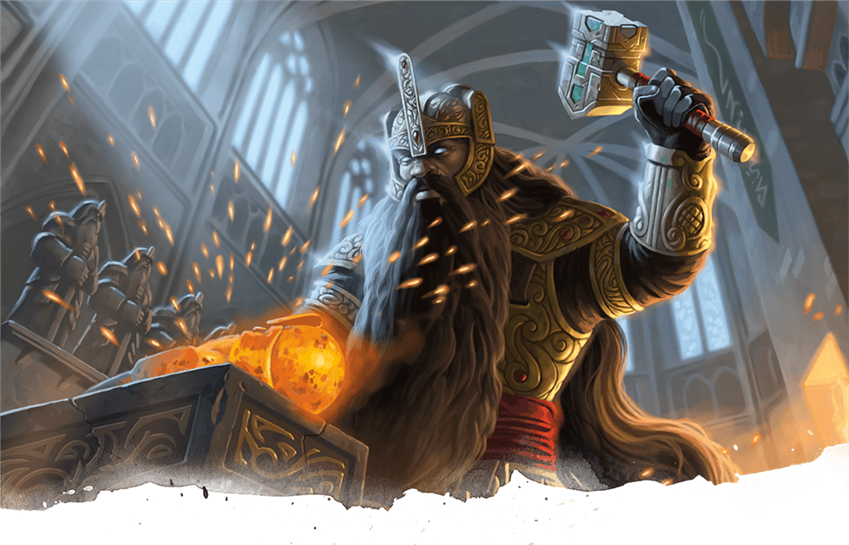
Suggested Build
As an artificer, you choose what kind of Artificer Specialist you want to be at 3rd level. This gives you time to figure out what sort of role you want to fill in the party. If you decide that you want be a flexible character who can tank blows for their allies one encounter and slip unseen into the shadows the next, Armorer is custom-fitted for your needs. To learn about the other roles the artificer class can fill, check out Artificer 101: A Beginner’s Guide to Making Magical Marvels.
All artificers need a keen intellect in order to be effective. As such, prioritize making your Intelligence score as high as possible. Even though you’ll often be striking foes with your fists, your magical Thunder Gauntlets allows you to add your Intelligence modifier, rather than your Strength modifier, to attack and damage rolls. Beyond that, it’s useful to improve your Dexterity and Constitution scores to improve your somewhat meager hit points, and to improve your AC if you decide to wear medium armor rather than heavy armor.
An Armorer should place their highest ability score in Intelligence and their second-highest in either Dexterity or Constitution, depending on whether you think stealth or tanking is more important to you. Thanks to the new “Customizing Your Origin” section in Tasha’s Cauldron of Everything, you don’t have to let your character’s race dictate their ability scores; you can reassign your racial ability score bonuses to any score you see fit. If you’re playing without these rules, the rock gnome and high elf races grant useful bonuses to Intelligence and other useful abilities, plus other mechanical bonuses. However, the best way to create a character is to choose the race suits your character best, and build outward from there.
Choose EQUIPMENT instead of GOLD at the end of character creation. Your two simple weapons can be anything that you think fits your character’s aesthetic. You still have to grow from 1st to 3rd level before you choose your Armorer subclass, so your starting equipment doesn’t have to perfectly match what you want your character to wear when they master the craft of armoring. Choose scale mail for a solid defense—one that you can turn into your Arcane Armor later if you don’t find anything better on your adventures in the interim. Choosing a set of thieves’ tools will make infiltrating locations with your Infiltrator model armor much easier!
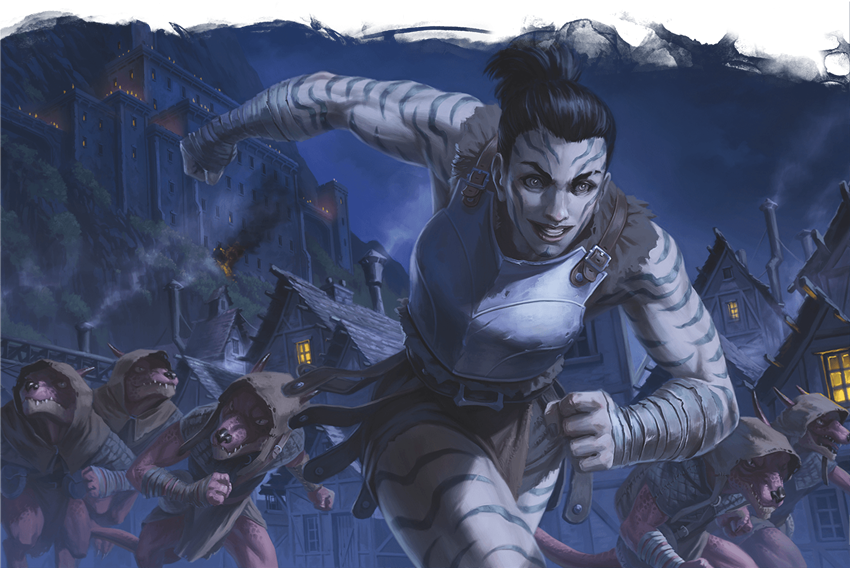
Spells
You prepare your spells, just like a cleric or druid. At the end of every long rest, you can prepare a number of spells from the artificer spell list, and can use your spell slots to cast these prepared spells in any combination. When you prepare spells, you can choose a number of artificer spells equal to your Intelligence modifier + half your artificer level, rounded down (minimum of one spell). You also start play with two cantrips, also chosen from the artificer spell list. These cantrips are 0-level spells that you can cast an unlimited number of times per day.
As an Armorer, you’ll want at least two spells marked DEFENSE, one spell marked OFFENSE, and one spell marked either SUPPORT, SOCIAL or UTILITY, depending on how you want to play your character.
- Absorb elements (DEFENSE/OFFENSE)
- Catapult (OFFENSE)
- Cure wounds (SUPPORT)
- Detect magic (UTILITY)
- Disguise self (SOCIAL)
- Faerie fire (SUPPORT)
- Feather fall (UTILITY)
- Grease (DEFENSE)
- Sanctuary (DEFENSE/SUPPORT)
Infusions
 Starting at 2nd level, you’ll be able to infuse items with magical power, turning them into something greater than what they were before. At 2nd level, you know four different infusions, and can have two of them active at a time. The infusions you pick should be largely based not on your build, but the composition of your party. What infusions do they need to be more powerful? Every time a party member does something awesome with an infused item you’ve given them, that’s a win for both of you.
Starting at 2nd level, you’ll be able to infuse items with magical power, turning them into something greater than what they were before. At 2nd level, you know four different infusions, and can have two of them active at a time. The infusions you pick should be largely based not on your build, but the composition of your party. What infusions do they need to be more powerful? Every time a party member does something awesome with an infused item you’ve given them, that’s a win for both of you.
You learn four infusions at 2nd level, and can replace any infusion you know with another one whenever you gain a level. The infusions available to you at 2nd level are:
Enhanced Arcane Focus. For parties with spellcasters in it. Even though you usually use your artificer's tools as a spellcasting focus, you can benefit from this infusion as well—since any item you create can be used as a spellcasting focus!
Enhanced Defense. For parties with heavily armored allies. You can use this one yourself, if enemies have been focusing you down lately!
Enhanced Weapon. A broadly useful infusion for parties with damage-dealing powerhouses in it.
Homunculus Servant. For the artificer who needs a little helping hand, you create a tiny creature that can deal a little bit of damage in combat, but is mostly useful for helping you as a conduit for your spells.
Repeating Shot. For parties with ranged attackers. You can empower a ranged weapon with a magical bonus to attack and damage, and grant it the ability to conjure and load its own ammunition!
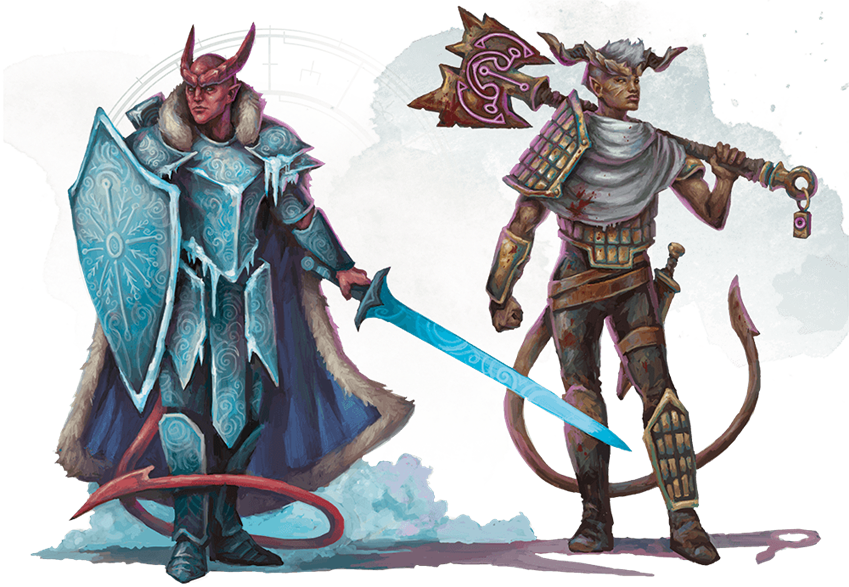
Feats
Once you’ve improved your Intelligence score to 18 or 20, you can increase your power with a few useful feats. The following feats are good picks for Armorer artificers, and will improve your reliability in your own desired area of expertise:
Eldritch Adept. Using this new feat from Tasha’s Cauldron of Everything, you can infuse your artificer with a bit of a warlock’s unsettling magic. Choosing the invocations like Mask of Many Faces and Devil's Sight makes you a more potent infiltrator. The only question is…where does this power come from?
Heavy Armor Master. If you plan on tanking in heavy armor, this damage-reducing feat is a useful one for you, especially due to your relatively low hit points.
Mobile. Tanks like to rush into combat and attract the attention of many foes at once. Sneaks like to move quickly and quietly. Since you have the power of both these roles, Mobile is almost always going to be useful for you!
Sentinel. There simply isn’t a better feat for a tank to take. Be sure to take this if you plan on tanking a lot for your party.
Shadow Touched. This new feat from Tasha’s Cauldron of Everything tinges your artificer with the gloom of the Shadowfell—a useful gift to have for anyone who wants to make excellent use of their Infiltrator model armor.
Tough. Plan on taking lots of damage to spare your party from being hurt? Then it would be smart to pick up a few extra hit points.
If you want more advice for building an artificer, check out Artificer 101. Have you ever played an Armorer artificer? What advice would you give to players that want to play this subclass? Join us next week as we dive deep into the contents of Tasha's Cauldron of Everything with Barbarian 101: Path of the Beast!
Create A Brand-New Adventurer Acquire New Powers and Adventures Browse All Your D&D Content
 James Haeck is the lead writer for D&D Beyond, the co-author of Waterdeep: Dragon Heist, Baldur's Gate: Descent into Avernus, and the Critical Role Explorer's Guide to Wildemount, a member of the Guild Adepts, and a freelance writer for Wizards of the Coast, the D&D Adventurers League, and other RPG companies. He lives in Seattle, Washington with his fiancée Hannah and their animal companions Mei and Marzipan. You can find him wasting time on Twitter at @jamesjhaeck.
James Haeck is the lead writer for D&D Beyond, the co-author of Waterdeep: Dragon Heist, Baldur's Gate: Descent into Avernus, and the Critical Role Explorer's Guide to Wildemount, a member of the Guild Adepts, and a freelance writer for Wizards of the Coast, the D&D Adventurers League, and other RPG companies. He lives in Seattle, Washington with his fiancée Hannah and their animal companions Mei and Marzipan. You can find him wasting time on Twitter at @jamesjhaeck.








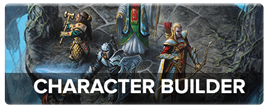
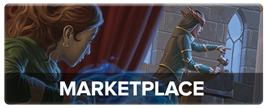

-
View User Profile
-
Send Message
Posted Nov 26, 2020You can certainly attack with them, but you aren’t eligible for TWF because you aren’t holding them. If tabaxi claws can’t be used with TWF, gauntlets you aren’t explicitly wielding/holding as weapons also can’t.
-
View User Profile
-
Send Message
Posted Nov 26, 2020You can certainly attack with them, but you aren’t eligible for TWF because you aren’t holding them. If tabaxi claws can’t be used with TWF, gauntlets you aren’t explicitly wielding/holding as weapons also can’t.
-
View User Profile
-
Send Message
Posted Nov 26, 2020Second definition: "have and be able to use". It helps to read the whole entry, not just the first line.
YES YOU DO: "Use" is the common word, not "hold". You can't use something you are not wielding. If you attack with something you are using it.
It's not that confusing. You can make a "weapon attack" (e.g. unarmed strike) without a weapon. But many abilities use the phrase "with a [qualifier] weapon". In which case, a weapon of the appropriate type is required. For all game-mechanic purposes thunder gauntlets and beast path weapons are treated as simple melee weapons.
-
View User Profile
-
Send Message
Posted Nov 26, 2020Tabaxi claws are not simple melee weapons. Those magic words in the text of the ability transform the gauntlets into something different. You cannot make an unarmed strike with the gauntlets.
-
View User Profile
-
Send Message
Posted Nov 26, 2020You might want to do that yourself, since that definition refers to power or influence, not weapons or tools.
-
View User Profile
-
Send Message
Posted Nov 26, 2020Or look in a proper dictionary with complete definitions, rather than believing everything you read on the internet is true. (that second definition refers to anything that is wielded without holding, it could be power and influence, it could be a shoulder mounted rocket launcher).
Synonyms for wield, from Roget's Thesaurus (print edition): operate, touch, use.
Notably absent from the list: Hold.
-
View User Profile
-
Send Message
Posted Nov 26, 2020Because it's not a synonym; I never argued that it was as synonyms have no relevance to RAW.
If you have to rely on a thesaurus and synonyms then you're not arguing RAW, because in RAW they used the word wield, and the word wield has a definition, and that definition (with regards to weapons and tools) is to "hold and use".
The word synonym also has a definition, which is "a word or phrase that means exactly or nearly the same as another"; synonyms are more often similar to a word, but not the same. WotC didn't use the word operate, touch or use, they used the word wield. Even so, other synonyms for wield are "brandish", "handle" and "swing", which are all also notably for suitable for weapons and tools.
-
View User Profile
-
Send Message
Posted Nov 26, 2020The would "wield", like every other word in English, has multiple uses. You decide which one to apply by the context. The D&D ruleset is written in standard English and does not specify one unique definition of the word.
Likewise, "hold" has multiple meanings. You can hold power for example. Something does not have to be in your hand to be held.
You could hold a weapon in your teeth. But you are not wielding it because you cannot use it.
The point, and the intent, of saying the gauntlets are "simple melee weapons" is that they follow all the rules for simple melee weapons. They are not regular gauntlets, which are not simple melee weapons.
-
View User Profile
-
Send Message
Posted Nov 26, 2020Sure. So why are you specifically choosing the wrong one given the context?
We're talking about the dual wielder feat, which specifically references wielding weapons; the "hold and use" definition of wield is in the context of weapons and tools. But the examples you keep giving refer to the use of wield in terms of authority or power etc., you want to use the wrong definition for the context.
D&D also very specifically uses certain words in many cases; you wield a weapon such as a sword, it is also a held item, a shield is also a held item, armour is worn, you must don or doff shields and armour, but can draw or stow a weapon etc.
Again the context doesn't support that; we're not talking about power, we're talking about objects. In the clear definition from context that would be held in the hand(s), assuming your intent is to use them (as opposed to held in a sack or whatever).
This is why wield isn't a synonym of hold; because you need to both hold and (be able to) use something to wield it.
-
View User Profile
-
Send Message
Posted Nov 26, 2020From the most recent sage advice:
”Are natural weapons considered weapons? Things desig- nated as weapons by the rules, including natural weapons, are indeed weapons. In contrast, unarmed strikes are not weapons. They are something you do with an unarmed part of your body.”.
Yes, tabaxi claws are unarmed strikes, but they are also weapons. Therefore eligible for TWF with the dual wielded feat. Except they aren’t being held or wielded, just like the lightning gauntlets, so they aren’t eligible actually. Same reason a lizardfolk bite isn’t eligible for the dueling fighting style. It being a weapon as ruled by sage advice doesn’t mean you can use it with features which explicitly require wielding/holding them as weapons.
-
View User Profile
-
Send Message
Posted Nov 26, 2020The problem with this whole argument is that at the time that the feat was written, there were no weapons in 5E that could not be held in your hands because they hadn't included any sort of weapons that affixed to one's gauntlet or body. So "held" was a perfectly fine adjective at the time and they weren't thinking about the possibility of what might happen several years into the future if someone created a weapon that's a magic gauntlet.
-
View User Profile
-
Send Message
Posted Nov 26, 2020I completely understand that they're working on the functionality. On the primary Tasha's forum post, it said "later this week" which zoomed past us on Friday. Would be nice to know a potential timeline.
Are we talking weeks, months or years?
-
View User Profile
-
Send Message
Posted Nov 26, 2020For an armorer, I recommend the hobgoblin as the race. It has a +2 bonus to con and a +1 to int, and saving face really can help with a perfectionest. ROCK gnomes are good too I guess.
-
View User Profile
-
Send Message
Posted Nov 26, 2020Any race is good now, especially with the Customize your Origin from Tasha's
-
View User Profile
-
Send Message
Posted Nov 27, 2020I am head-over-heels for the little writing bits at the beginning of the article. Honestly, I don't even need to read the rest of the article to want to play this class. Very helpful tips and beautiful art, as always.
-
View User Profile
-
Send Message
Posted Nov 27, 2020Sure, but they've had no end of opportunities to fix it in errata or clarify in sage advice, yet the wording still seems to stand.
When it comes to claws I think it's clear that while they count as a weapon for some purposes, they're still intended to be used like unarmed fighting, so only unarmed fighting specialists (i.e- Monks) can make additional attacks with them. Being weapons still allows you to boost them with various abilities and spells, as well as poison them if you want to.
I think it's also worth keeping in mind that just because you can't use them with two weapon fighting, doesn't mean you aren't using both claws to attack with; plenty of monsters follow the same pattern with a single "claws" attack, and aren't likely to just be politely holding one set of claws behind their back as they fight you. The same is true of unarmed strikes in general; just because you're not making multiple attacks doesn't mean you aren't punching with both fists when you can, or using a mixture of kicks, punches, headbutts etc.
-
View User Profile
-
Send Message
Posted Nov 27, 2020RAW it can be a variety of items, and those listed are only the most common examples. If you reread the section in the PHB regarding what an arcane focus is.... "An arcane focus is a special item — an orb, a crystal, a rod, a specially constructed staff, a wand-like length of wood, or some similar item ." - There is great flexibility in what can serve as an arcane focus. For purposes of using one with the current JavaScript - you can select any of the items, and then customize its name, etc. through the Equipment Manager Interface on the character sheet.
-
View User Profile
-
Send Message
Posted Nov 30, 2020Do we have any sort of window for this at all? On release it was “later this week”. I understand some changes will be quite complex but the artificer infusions are almost exactly that of the UA.
-
View User Profile
-
Send Message
Posted Nov 30, 2020Yes, I think they made the armorer just for this
R.I.P tony stark
-
View User Profile
-
Send Message
Posted Nov 30, 2020If I play Aarakocra, or multiclass into a draconic ancestry Sorcerer, does this cover my wings